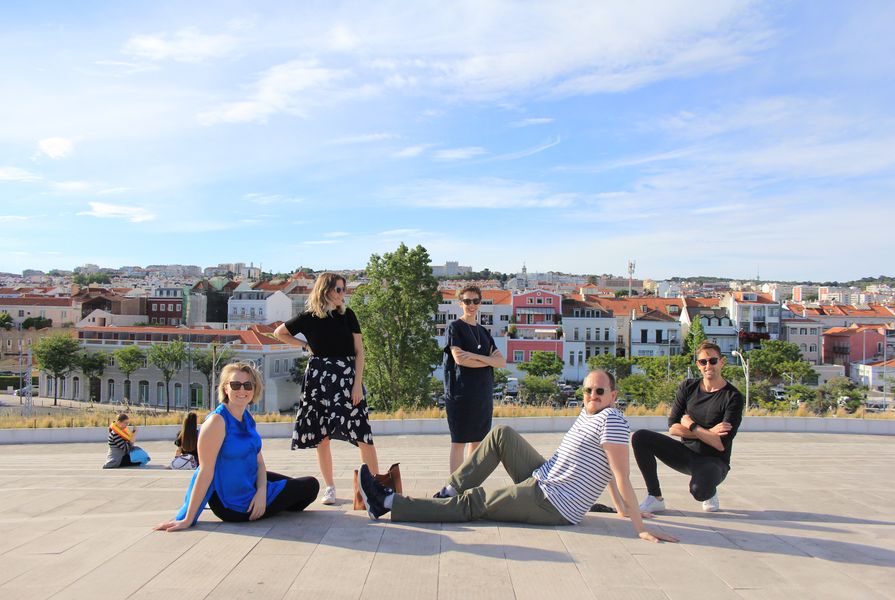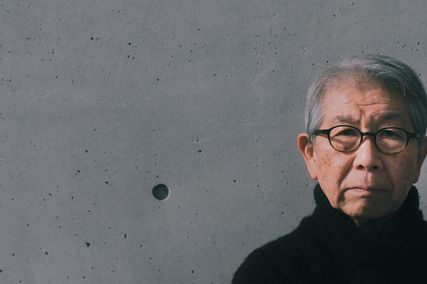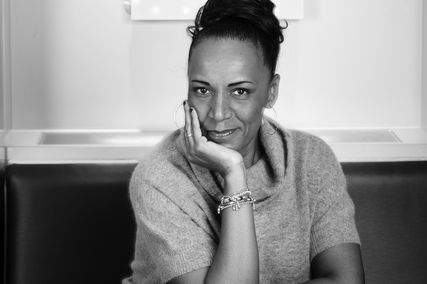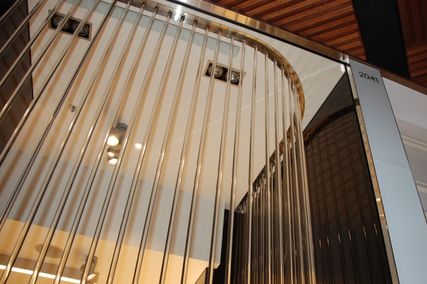Lisbon is a city that has weathered many adversities: a 1755 earthquake that destroyed two-thirds of the city, a 1988 catastrophic fire that ravaged 18 buildings, and more recently the collapse of the Portuguese economy. This history is woven into the tapestry of the city’s urban fabric.
“The renewal of the city is directly linked with the evolution of the city,” said Nuno Bernardo Griff, director of Lisbon architecture practice Embaixada, which the Australian Institute of Architects 2019 Dulux Study Tour group visited this week.
“There’s such openness to international forces in Lisbon,” said Dulux Study Tour winner Alix Smith. “You can tell after the economy collapsed, the way they talk about investors, rather than developers, is a really positive thing. I thought it was quite interesting, even in the attitude of everyone being accepting that Amanda Levete came and designed that big landmark.”
The Museum of Art, Architecture and Technology by Amanda Levete Architects.
Image: Linda Cheng
That landmark is the Museum of Art, Architecture and Technology (MAAT), a public museum commissioned by Portuguese energy company EDP Group and completed in 2016. The museum represents a push to try to revitalize the riverfront in the historic district of Belém.
“The building makes some fantastic civic moves,” said fellow tour winner Carly McMahon. “The sculptural form of the building also provides a large open space on the rooftop, with 360-degree views of the river and the city. When seen from particular angles, it has beautiful lines reminiscent of the Sydney Opera House.”
MAAT is one example of how private investment is leading urban renewal in the city. José Mateus, director of Lisbon studio ARX, said prior to the economic collapse, they would work mainly, “or almost 100 percent”, on public projects.
“When the country ran out of money, [the government] could not invest in public buildings anymore. So we tried to find the private investors,” he said. “One of our projects is an international school in Lisbon that was founded by a French family.”
Mateus is also president of the Lisbon Architecture Triennale. “Lisbon resisted the crisis because the mayor, who is now the prime minister, believed that investment in culture was really important to the city,” he said. “In 2013 when we opened the third edition of the triennale, people came from all over the world and were really surprised at the intensity of the cultural scene in Lisbon.”
Portuguese Pavilion by Alvaro Siza Vieira.
Image: Linda Cheng
“Portugal is a really safe country,” Mateus continued. In fact, in 2019 Portugal is ranked as the fourth safest country in the world behind Iceland, New Zealand and Austria – a factor Mateus says contributed to its economic recovery.
“Our politicians decided to offer benefits for foreigners who invest in the country to get a European golden visa. Our mayor invested in coworking spaces. Many young entrepreneurs came to the city.”
One such co-working space was set up in Lisbon by English company Second Home. The Selgas Cano-designed space above a traditional market hosts up to 350 members. At one time, it was home to the digital hub of Mercedes Benz. The vibrantly coloured spaces and a jungle of indoor plants are in stark contrast to the style of work done by local Portuguese architects.
Second Home by Selgas Cano.
Image: Linda Cheng
Dulux Study Tour winner Phillip Nielsen described Portuguese architecture as “a polite conversation rather than a yelling match.”
Jennifer McMaster added, “From afar, Portuguese architecture has always been quite blank, neutral and stark, but in and against the backdrop of the city, which is so textured, rich and patterned, that architecture is such a breath of fresh air and such a quiet moment. It says so much about understanding their role in the city.”
“The practices all talked about the context and history in all the places,” said Carly McMahon.
Embaixada’s work is emblematic of this approach. The practice, whose name means “embassy,” has painstakingly mapped the city’s urban evolution, as well as its various building types, as a tool to help foreign investors understand the city.
Another example is the restoration of the Thalia Theatre by Gonçalo Byrne Architects and Barbas Lopes Architects. The original 1825 ruin encased in an austere concrete exterior. “While this renovation is a contemporary work there are moments when the marriage of old and new is so well executed, it was hard to tell which is which.” said Phillip Nielsen.
The role of architects in Lisbon seems to be one of custodianship. “This is a city of alterations and additions,” said Ben Peake. “There’s a sense that this is our time, there’s future people to come.”
Phillip Nielsen observed, “Architecture is political here. When I look at the architecture of the country, it is intertwined with the politics of delivery and crisis.”
Linda Cheng travelled with the 2019 Dulux Study Tour. Follow #2019DuluxStudyTour on social media and the blog.











































